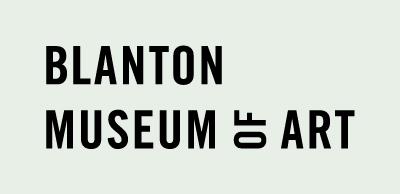Rapid Reflect
Primary
John Goodyear
(Los Angeles, California, 1930–)
NationalityAmerican, North America
Date1966
MediumAcrylic on metal and plastic with internal lighting
DimensionsOverall: 24 3/16 × 48 11/16 × 4 7/16 in. (61.4 × 123.7 × 11.2 cm)
Additional Dimension: 48 1/16 × 4 15/16 × 24 in. (122 × 12.5 × 61 cm)
Additional Dimension: 48 1/16 × 4 15/16 × 24 in. (122 × 12.5 × 61 cm)
Credit LineBlanton Museum of Art, The University of Texas at Austin, Gift of Mari and James A. Michener, G1968.63
Keywords
Rights Statement
Collection AreaModern and Contemporary Art
Object numberG1968.63
On View
Not on view“Space-warp,” “timeline,” “optic energy,” “eye-ibel,” “reversibility,” and “weightlessness.” These are just a few of the terms adopted by the Park Place Group, a New York-based collective that included such artists as Mark di Suvero, Robert Grosvenor, David Novros, and Ed Ruda. Dean Fleming was a founding member of the Park Place Group. He also served as co-director of the Park Place Gallery, which opened in 1963 and then closed in 1967, the same year the Park Place Group itself disbanded. In addition to providing members (and eventually non-members) with a large, open space in which to exhibit their work, thereby freeing them from the pressures associated with showing at mainstream galleries, the gallery hosted concerts, performances, symposia, and even anti-Vietnam war rallies.
The artists affiliated with the Park Place Group worked in a variety of media and produced highly individual bodies of work. Nonetheless, they embraced a shared set of concerns—physics, mathematics, engineering, and science fiction among them. (Fleming himself studied aeronautical engineering at California Polytechnic State University and worked for the Douglas Aircraft Company in the 1950s.) As critic David Bourdon wrote in 1966, the “Park Place artists take the Space Age for granted and try to get it across in their work.” Fleming’s own paintings are austere in form yet dynamic in effect. Both Untitled and Snap Roll consist of interlocking planes of high-contrast color. A parallelogram occupies the center of each canvas. The parallelogram, in combination with the geometric forms attached to its right and left sides, create a zig-zag pattern that “shunts the eye” from one edge of the painting to the other. This optical activity is accompanied by a sense of spatial ambiguity, which is exacerbated by Fleming’s use of irregular, asymmetrical shapes like the parallelogram. “If an open viewer allows the reading to be in his own time,” Fleming once wrote of his work, “he can participate in the reversals of space and apparent contradictions between stillness and sudden motion, weight and gravitationlessness."
Exhibitions









![Gota de agua [Drop of Water]](/internal/media/dispatcher/6555/thumbnail)
![Physichromie No. 394 [Physichromy No. 394]](/internal/media/dispatcher/7504/thumbnail)
![Paralelas vibrantes (de la serie Síntesis) [Vibrant Parallels (from the series Synthesis)]](/internal/media/dispatcher/23866/thumbnail)

![Gotas transparentes [Transparent Drops]](/internal/media/dispatcher/12536/thumbnail)
